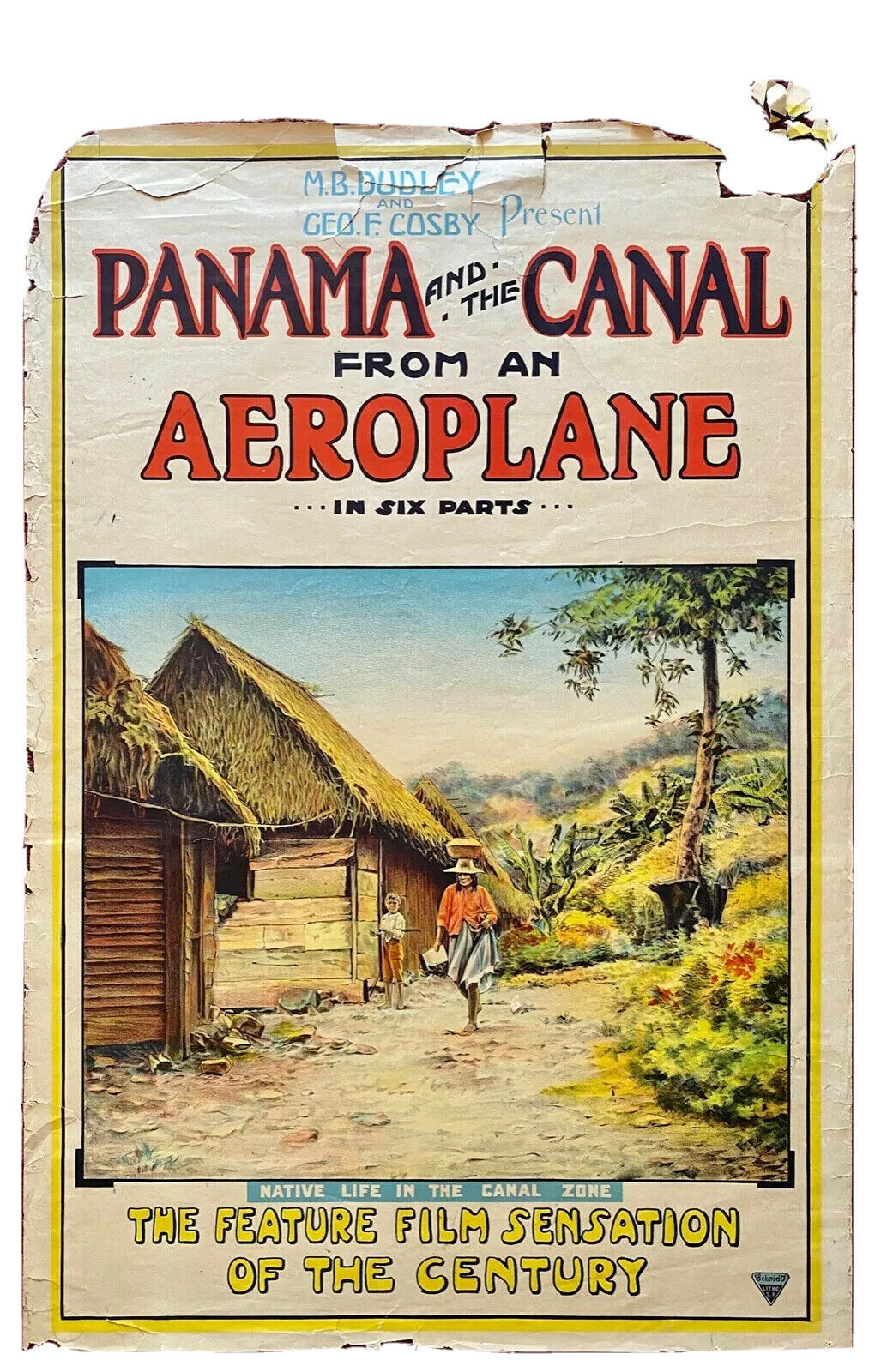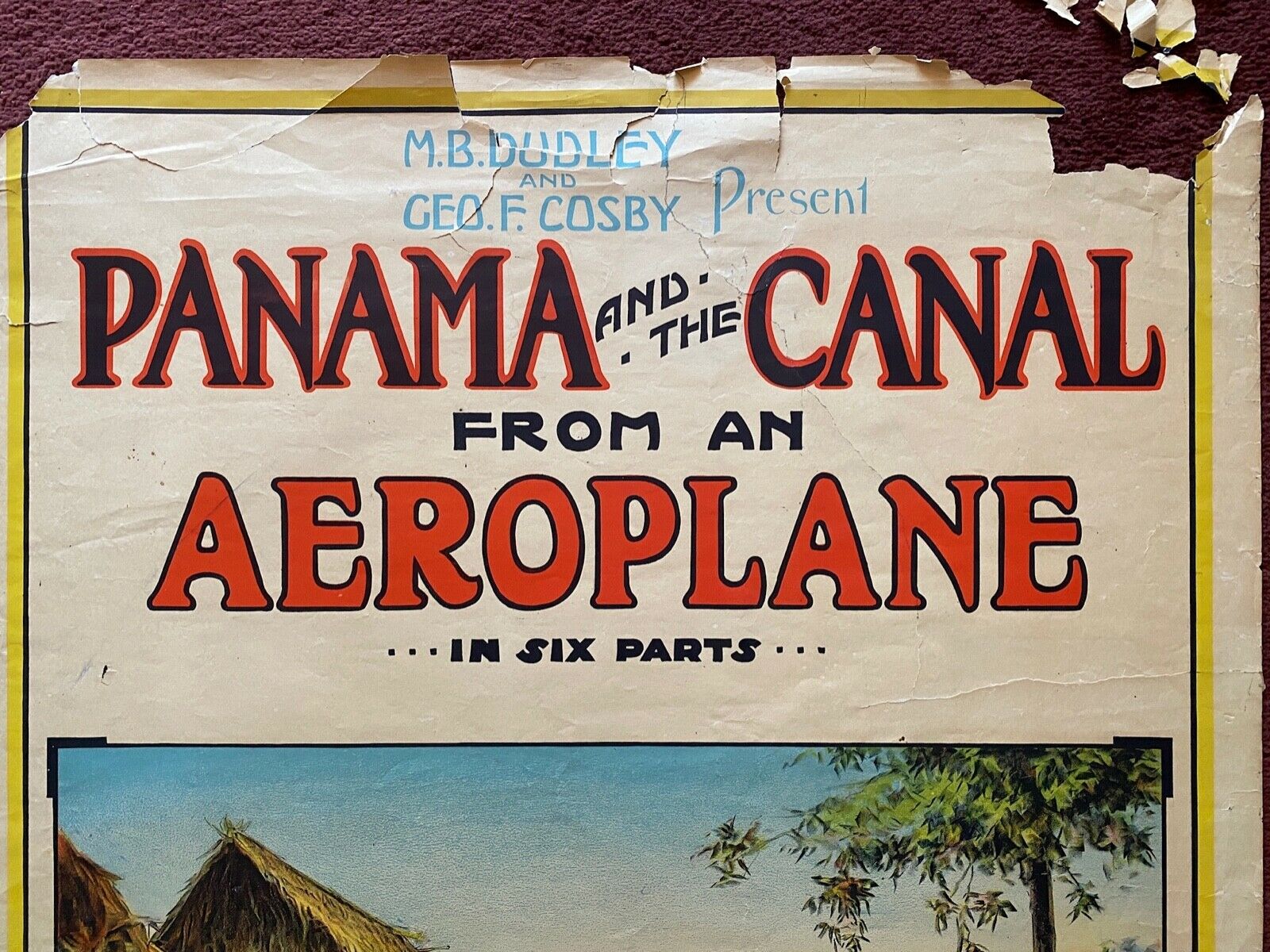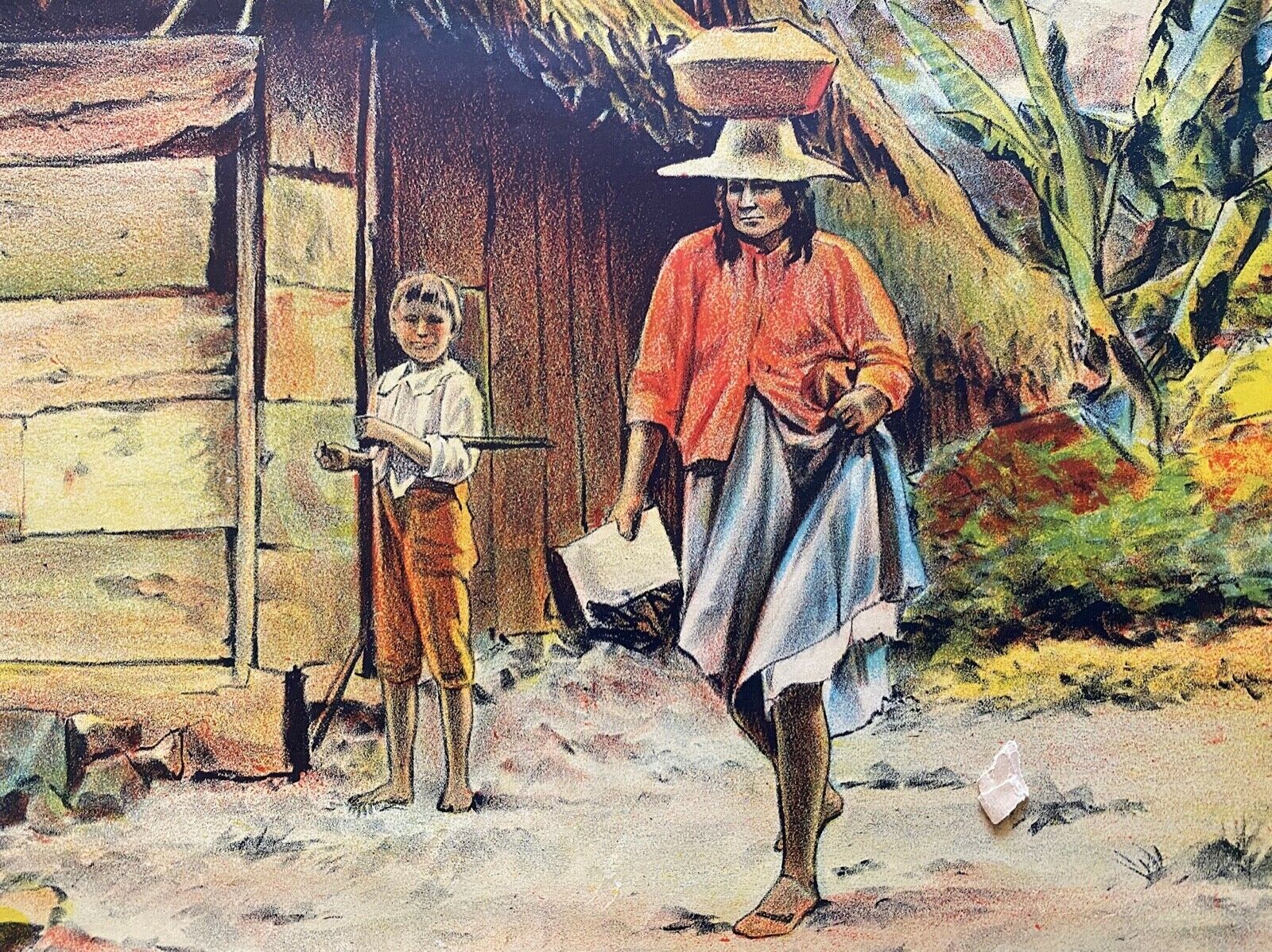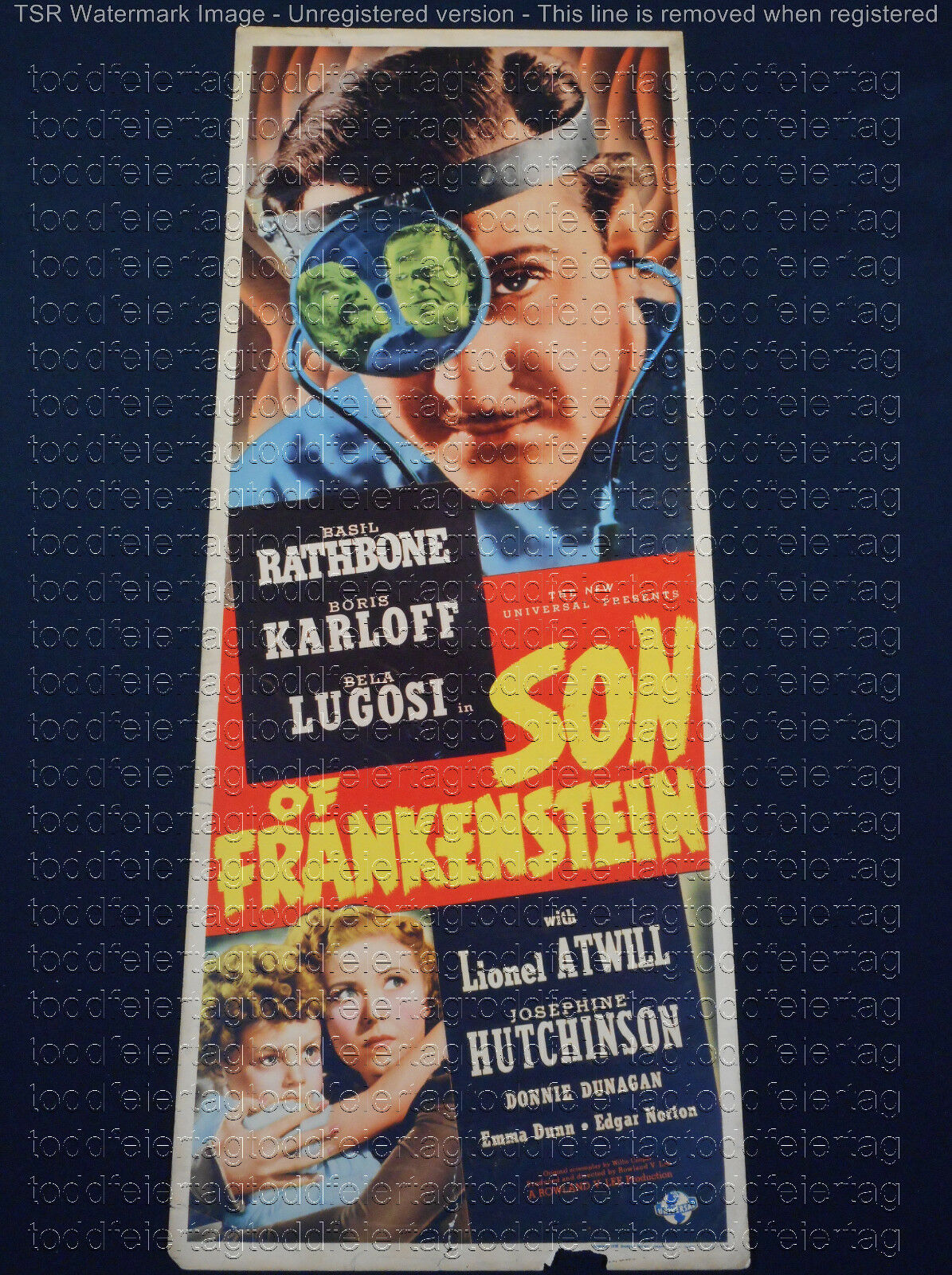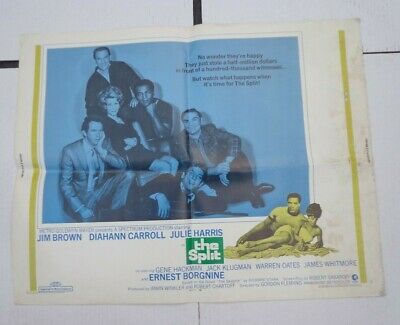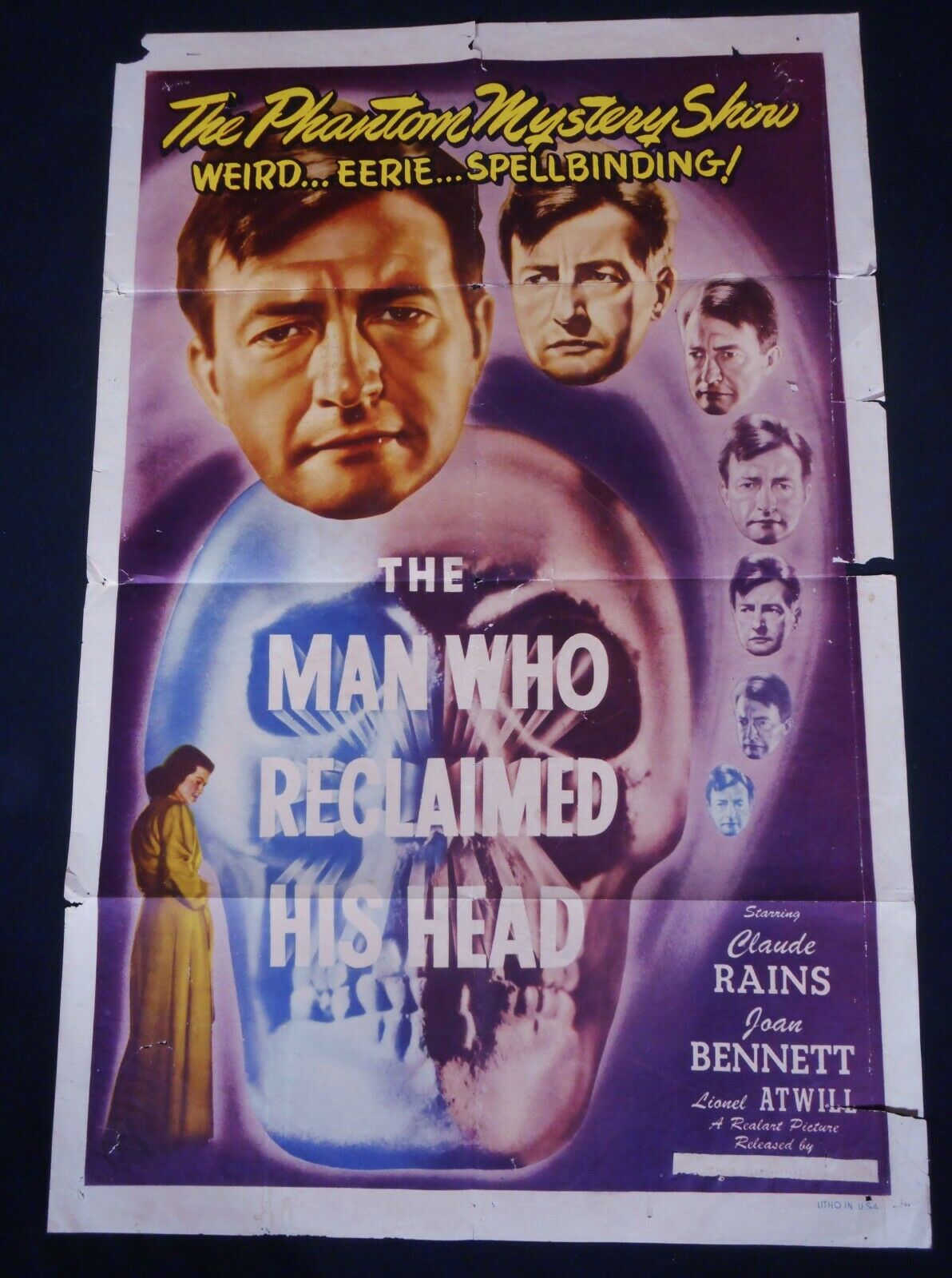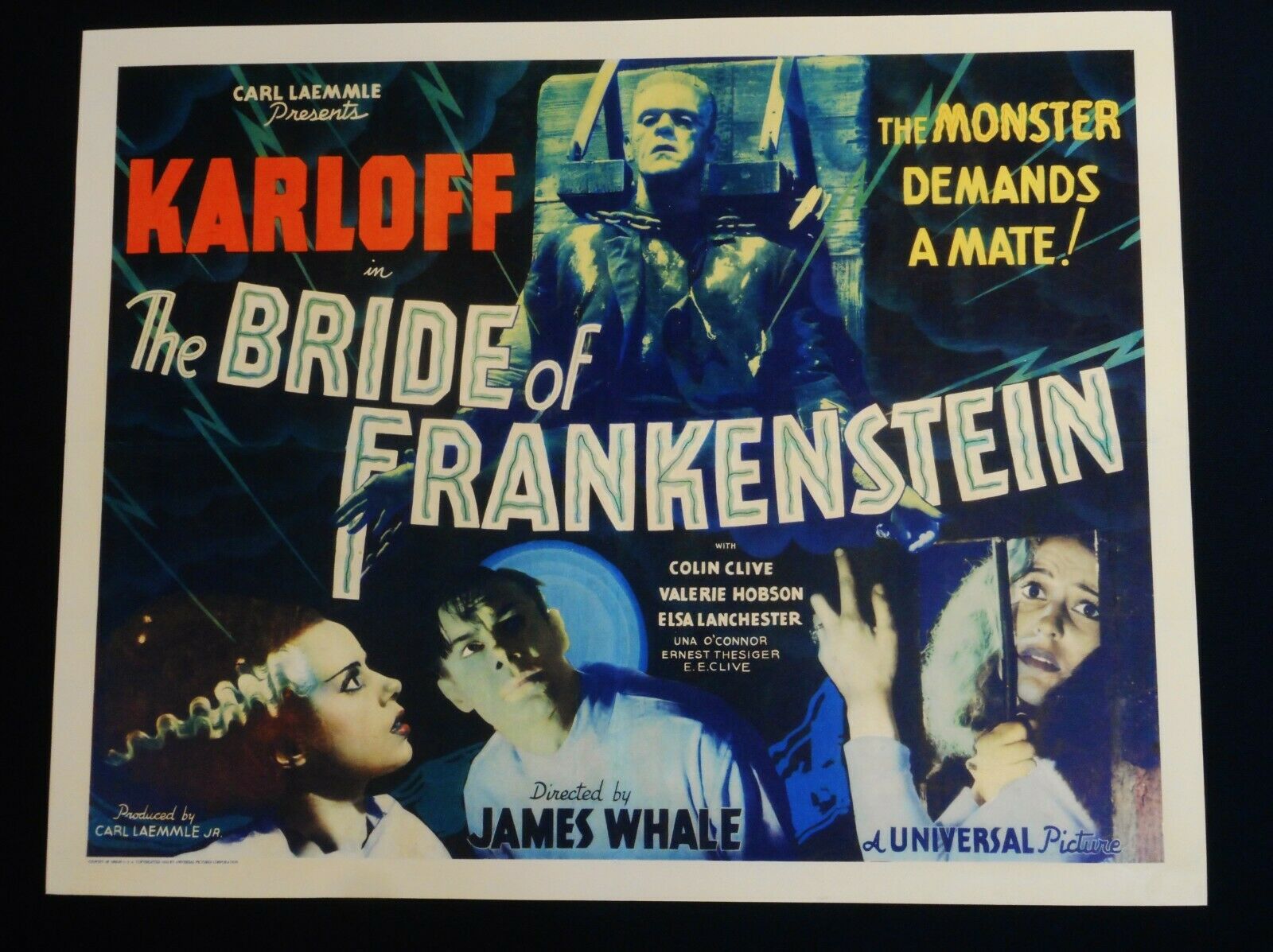-40%
PANAMA AND THE CANAL FROM AN AEROPLANE (1914) One-Sheet Pilot Robert G. Fowler
$ 316.8
- Description
- Size Guide
Description
This is a vintage original 28 x 42 in. US stone lithograph one-sheet poster from the teens documentary/actuality film,PANAMA AND THE CANAL FROM AN AEROPLANE
. Released in 1914 in six reels and billed as "The Feature Film Sensation of the Century," it was presented by M.B. Dudley and George F. Cosby. The beautiful artwork depicts a full-color rendering of an indigenous Panamanian boy and woman in traditional attire outside thatch-roofed houses in a village setting. Printed by Schmidt Litho of San Francisco, this poster is a stone lithograph, the process of which produces rich colors and very fine detail. This example is unrestored and unfolded in good- condition only. As seen in the listing photographs, there is paper loss along the top, left, and bottom borders. Two pieces along the top border were torn and have separated but are still present. These two pieces, along with the smaller pieces shown near the top right corner, can be replaced by a restoration studio during the linen-backing and restoration process if desired. However, the image area itself is in great condition with only an 8 in.
horizontal
tear starting on the right border and going through the shrubbery in the foreground and a 1 in. v-shaped near the thin branch at the left
between
the roofs of the two huts. The upper credits area is all intact in a slightly lesser condition. There are random creases of
varying
sizes along primarily the borders and inside the upper credits area and a few pieces of tan masking tape on the verso along the outer edges. The beautiful rich stone litho color tints are fresh and vibrant without any signs of fading.
To best protect this poster, it will be shipped rolled in a sturdy tube along with the loose pieces (placed separately and securely).
We could only find one other sales price for this historic silent film poster, which sold at auction almost 30 years ago in 1991 for 5.
Panama and the Canal from an Aeroplane
is a 1914 silent actuality film taken by pilot Robert G. Fowler and cameraman Ray Duhem. Fowler had gained fame a few years earlier when he became the first person to fly across the United States from West to East. Looking for other challenges, he designed a new aircraft with aeronautical engineer Jay Gage. The aircraft had wheels plus outriggers and pontoons and an 80-horsepower engine from Berkeley, California-based Hall-Scott. Then, on April 27, 1913, piloting this single-engine hydroplane, with passenger and motion picture photographer Ray Duhem in tow, Fowler took-off from Panama City and flew, nonstop, to Cristobal, on the Atlantic side. Fowler’s proposed route followed the still-under-construction Panama Canal, then crossed the soon-to-to-be-filled Gatun Lake, the engineering heart of what made the continental crossing possible for ships. He completed the innovative transcontinental crossing in a mere 55 minutes and became the first pilot to cross the Isthmus. Fowler and Duhem not only took motion picture footage of the canal and its giant locks, but also of fortifications and gun defenses (or military fortifications) under construction. One especially clear photograph showed a new type of gun emplacement then being created to guard the Pacific entrance to the Canal.
Delighted with the photographic work, and just months before the Canal opened,
Sunset
magazine editor Charles E. Field published them along with an article by Riley E. Scott in its April 1914 issue. Scott, a graduate of the U.S. Military at West Point, had astutely noted that the Canal was adequately protected from the land and sea but asked the haunting question, “can the Panama Canal be destroyed from the air?” Alarmed with the publication of what the United States War Department considered classified defense information, along with the mere suggestion of the Canal’s vulnerability, the government ordered the arrest of Robert Fowler, writer Riley Scott, and cinematographer/photographer Ray Duhem; the charge was espionage. Fowler was arrested at his San Francisco home in July 1914. But before delivering indictments, a federal grand jury evaluated the case and determined that neither the aviator nor any one else had acted with any intent to injure the nation. In return for Fowler’s pledge to remove several sections of the film, the government declined prosecution. Fowler always claimed he had received permission to make the flight from Colonel George Washington Goethals, the chief engineer in charge of Canal construction. However, by Executive Order signed by President Woodrow Wilson, it was made illegal to photograph the Panama Canal or any of its defense network. Violators of the order would be faced with ten years of imprisonment and a ,000 fine.
Robert G. Fowler was unique among early flyers, most of whom failed to survive pioneering years. During World War I, he opened a factory in San Francisco and was responsible for manufacturing 275 airplanes. The actual Fowler-Gage tractor biplane used in the making of
Panama and the Canal From an Aeroplane
still exists and was donated by Robert Fowler to the Smithsonian's National Air & Space Museum, where it is on display at the Smithsonian's Udvar-Hazy Annex in Chantilly Virginia.
